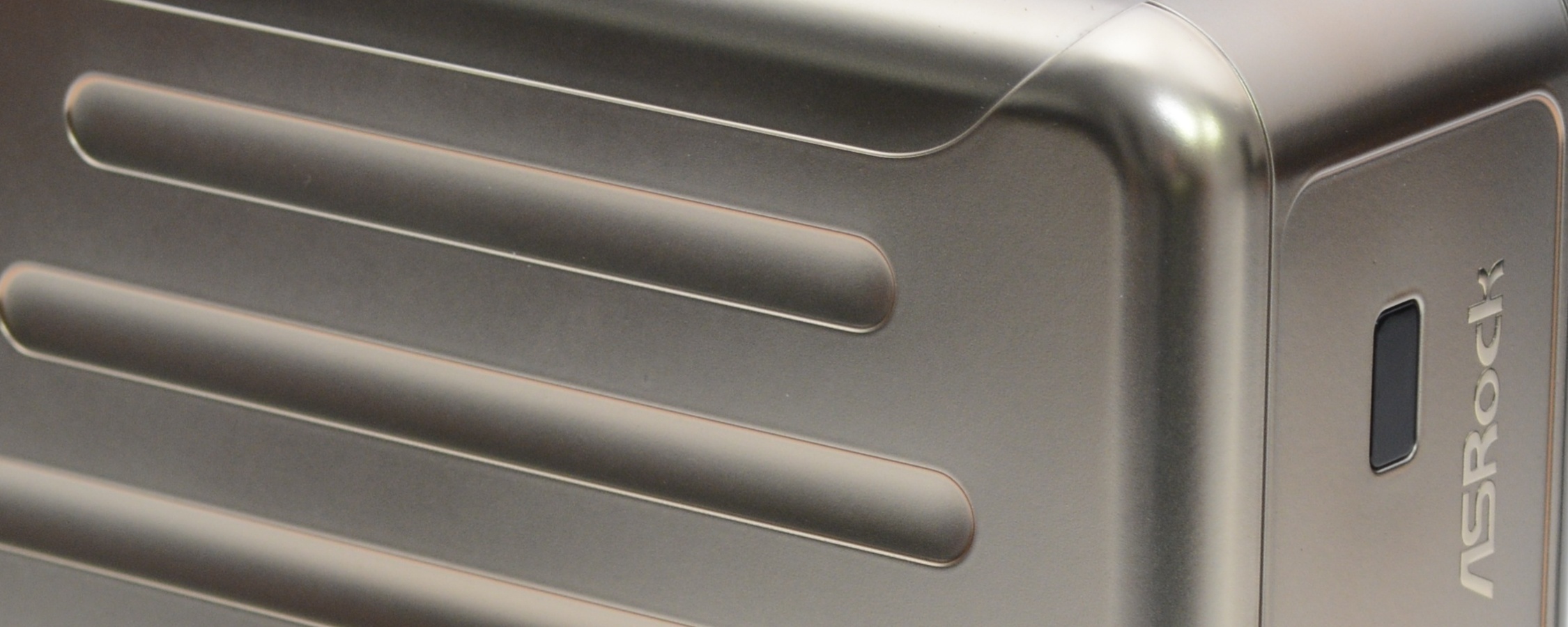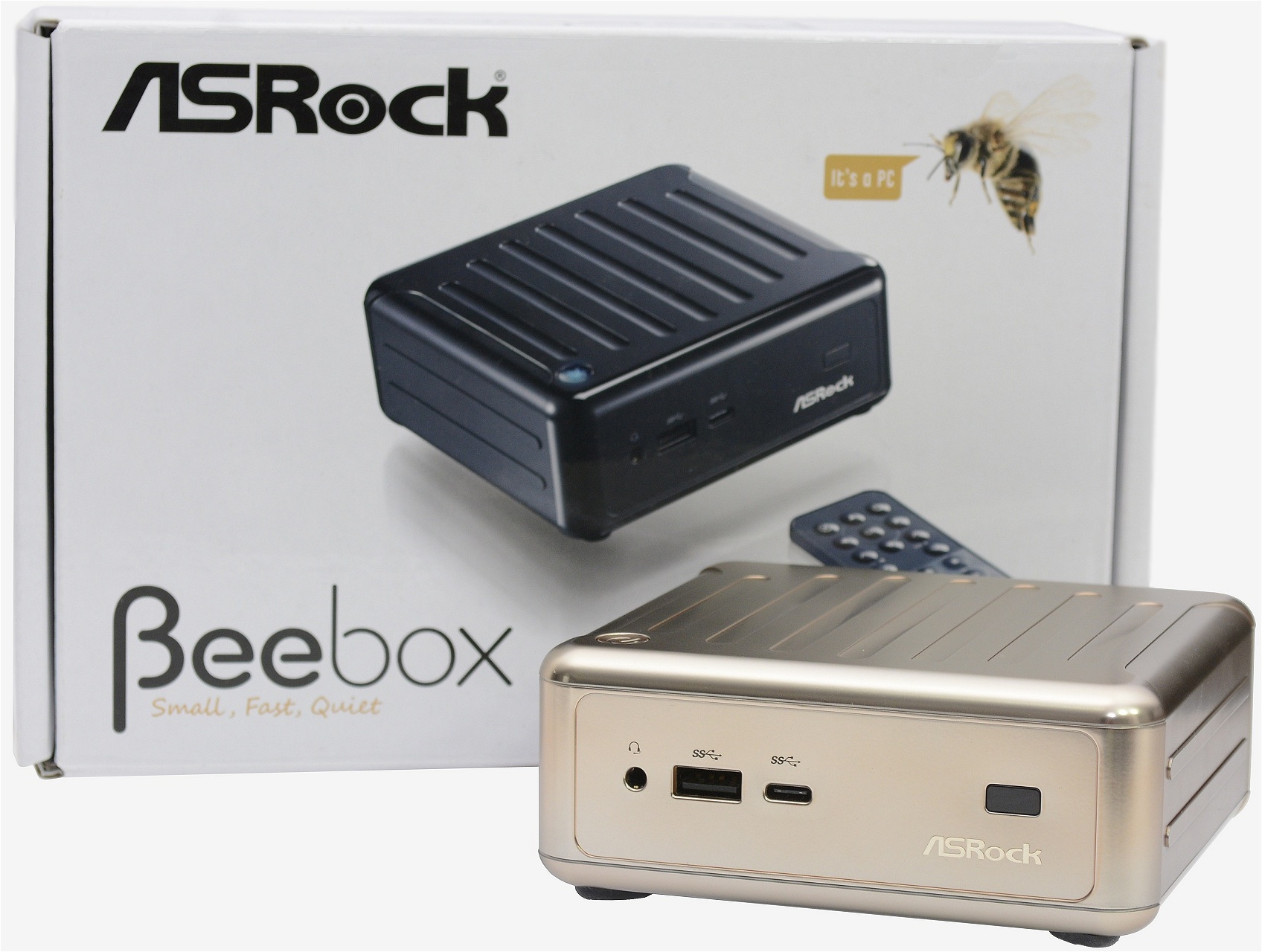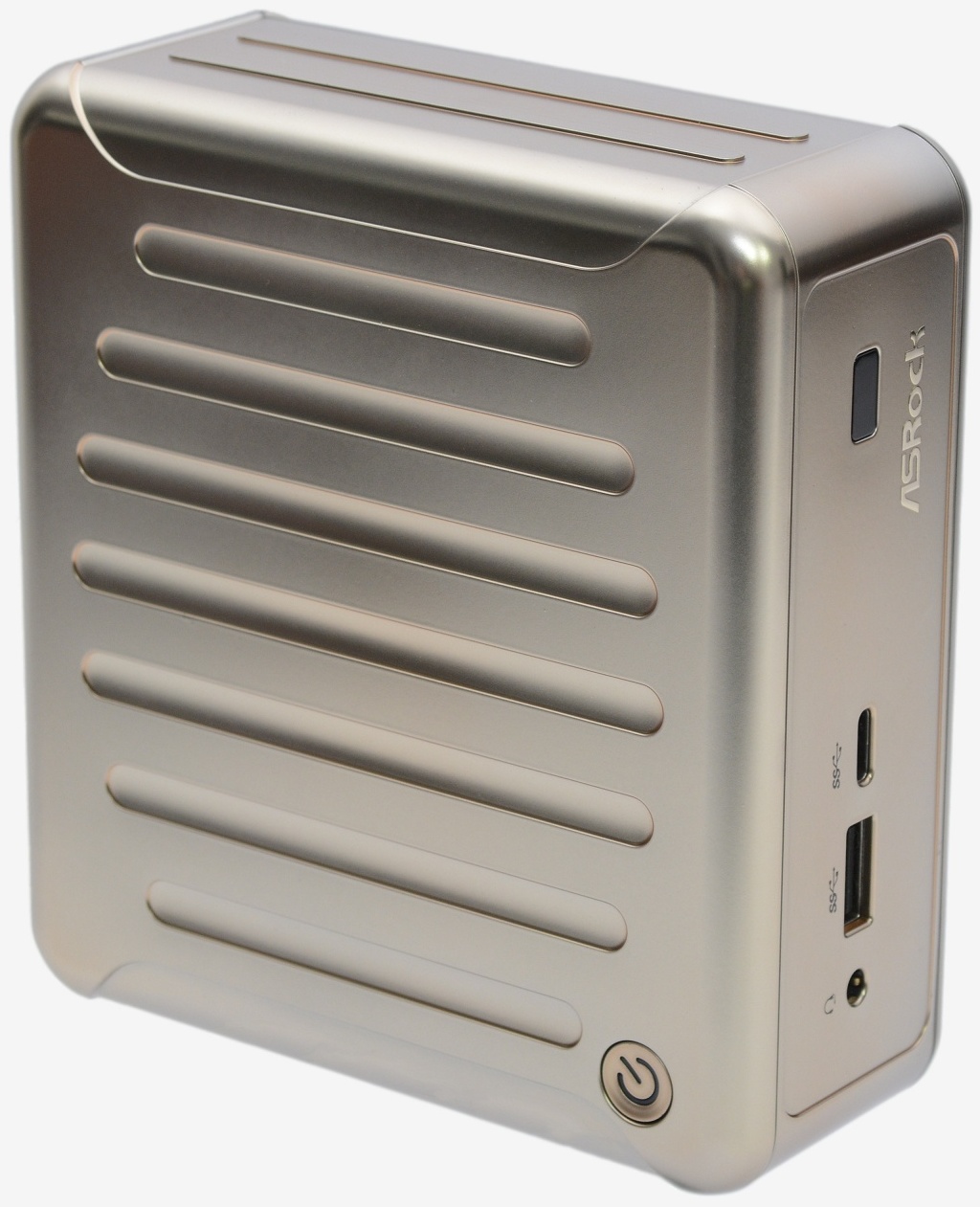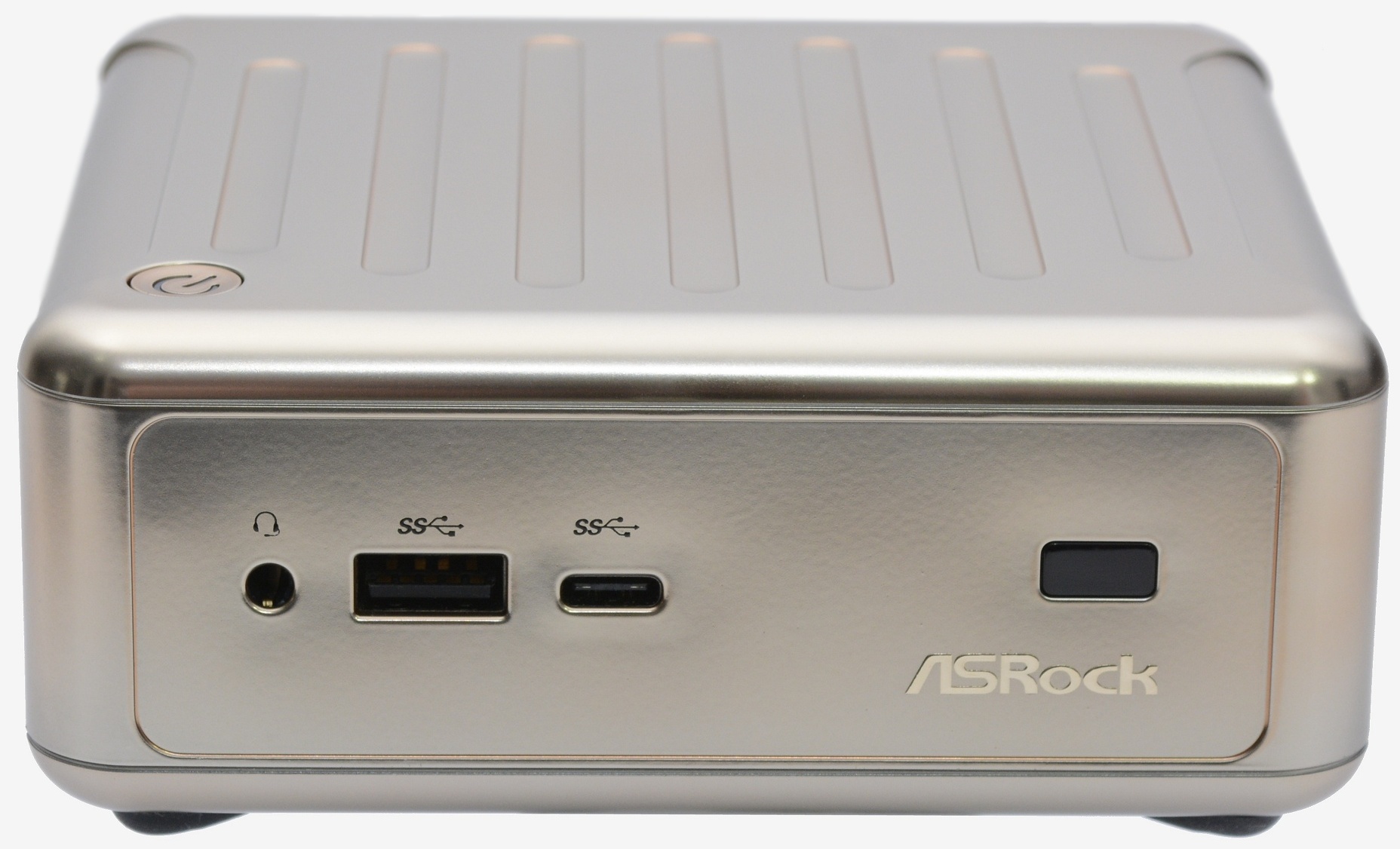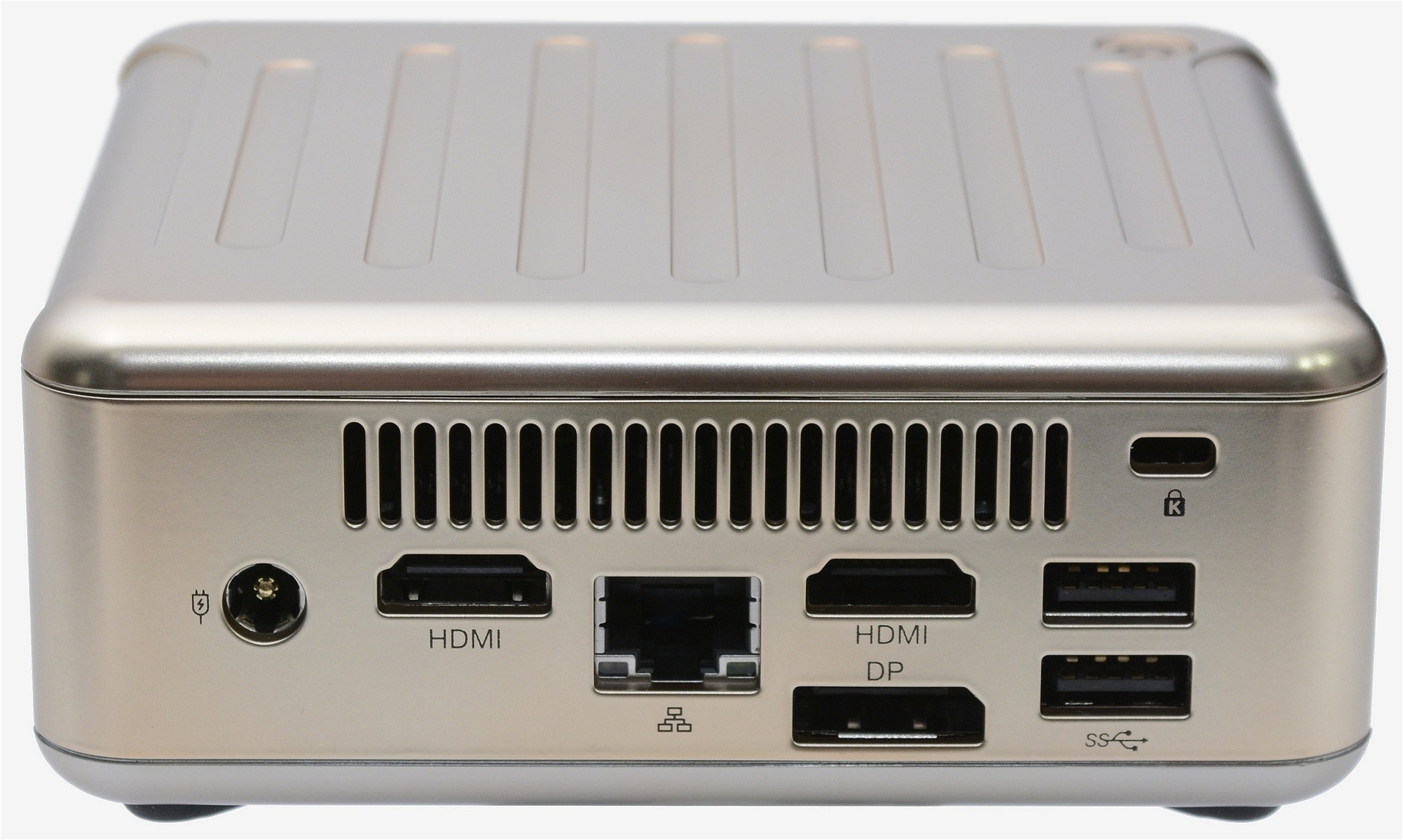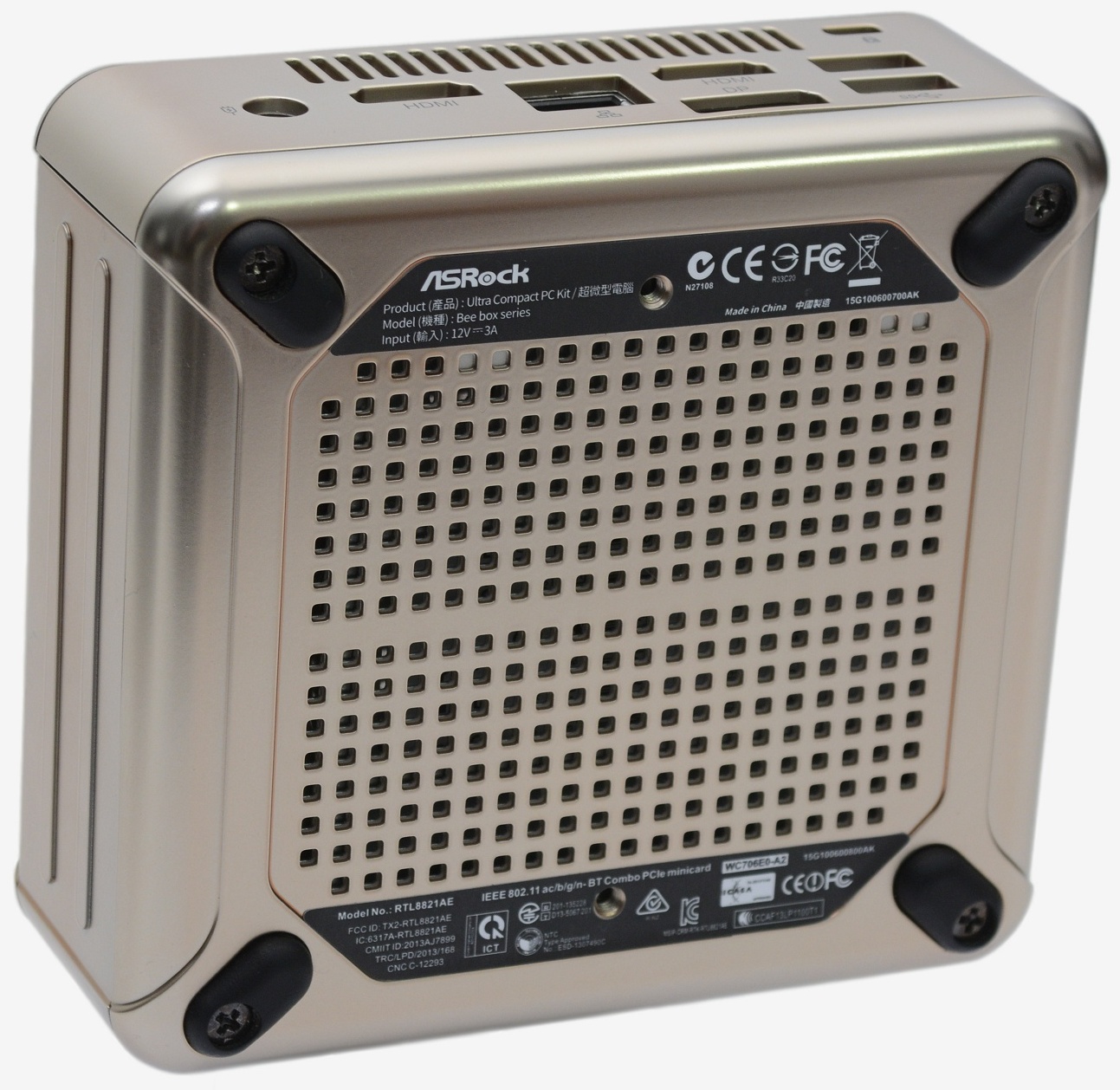We got our first look at Intel's Braswell SoCs last month courtesy of Asrock's N3050B-ITX and N3700-ITX motherboards outfitted with the new dual-core 2.16GHz Celeron N3050 and quad-core 2.40GHz Pentium N3700 SoCs.
Both chips were clocked lower than their Bay Trail-D predecessors which helped reduce power consumption but also made the Braswell parts slower, and sacrificing performance isn't something these low-end SoCs can really afford to do. While Intel's latest desktop SoCs didn't wow us, we were impressed with the quality of the boards and now Asrock is back to show us a more complete package by implementing Braswell in its new 'Beebox' mini PC.
Asrock is heavily promoting the fact that its latest mini PC can support triple-monitors using three video outputs simultaneously including 4K using DisplayPort. The company claims the Beebox can handle 4K video thanks to its unique dual-channel memory, a feature other Braswell mini PCs don't support.
The Beebox measures 0.6L and boasts a mere 4 watt TDP. This incredibly low power rating has allowed Asrock to create a tiny HTPC that is completely fanless. Under typical usage the entire system draws less than 10 watts.
Competition includes the Gigabyte BRIX BXBT-1900 ($140), which is similarly compact at 0.69L and also features a fanless design using the same Celeron J1900 SoC.
The mobile Bay Trail-M SoCs have also been a popular choice for small form factor computers with the dual-core 2.16GHz Celeron N2807 landing inside the Gigabyte BRIX BXBT-2807 ($130) and the Intel NUC DN2820FYKH barebones ($135) using the slightly faster 2.4GHz N2820.
There is also the ECS Liva X which comes with the Celeron N2808, a 1.58GHz dual-core Bay Trail-M SoC, 2GB of memory, a 32GB eMMC SSD as well as Windows 8.1 for only $190. ECS provided us with a review sample of the Liva X but we never ended up getting it to work correctly. The systems design and build quality appeared crude at best.
Asrock has also developed a Bay Trail-D mini PC with the Celeron J1900 called the Mini Q190D, but that's not nearly as noteworthy as the Beebox for a few reasons. For starters, with a 2.5L volume the Mini Q190D might be small but it's a mammoth compared to an Intel NUC using the same SoC. The Mini Q190D isn't fanless either and it doesn't support DisplayPort or 4K resolutions.
Beebox Design, Fit for a Sultan
The Beebox comes in white, black and gold. That's right, not silver, but gold, and in what can only be a move to take the mickey out of us, Asrock sent the gold version. At least it doesn't cost $10,000.
If we look past the plastic gold exterior and imagine the case in virtually any other color, the Beebox is a great looking mini PC. It's relatively sleek with nice curves and indentations that break up what would otherwise be a boring design.
On the front there are two USB 3.0 ports and one of them is a 'Type C' port. The Beebox is the first mini PC to feature Type-C USB, which apparently doubles the charge speed of devices such as smartphones.
Along with the USB 3.0 ports there is an audio-out jack that also accepts mic-in. Finally there is a small infrared receiver used to communicate with the supplied remote.
On top of the Beebox is a small circular power button which is gently backlit using a blue LED. The top of the unit measures 116 x 112mm and it stands 40mm tall.
Around the back we have a 12v 3a DC in-put, two HDMI outputs, DisplayPort output, two USB 3.0 ports, a single Gigabit LAN port and a Kensington lock. This provides the Beebox with considerably better connectivity than Intel's NUC DN2820FYKH for example.
Underneath the Beebox there are four small rubber feet and plenty of ventilation. The four screws seen above can be removed get inside the device.
The Beebox N3000 will be available in three configurations: a barebones kit, a full system with OS, and a full system without OS. The three offerings are identical at heart, including their fanless design, which makes them exceedingly quiet when in use.
For testing we have the N3000-NUC without OS and it comes with a 128GB mSATA SSD and 4GB of DDR3 memory. The Windows 10 Home version, which we assume will be available later in the month, only features a 32GB mSATA SSD and 2GB of memory. The barebones version goes without any memory, storage or software, and will be the best choice for those wanting to customize the Beebox.
Included in the box is a 36w/12v power adapter, remote control, VESA bracket as well as the typical user guides, manual and installation CD, which is ironic given that the Beebox doesn't have an optical drive – in fact, the surface area of the PC is smaller than a CD. Obviously you could buy a USB optical drive but we'll just download the drivers.
